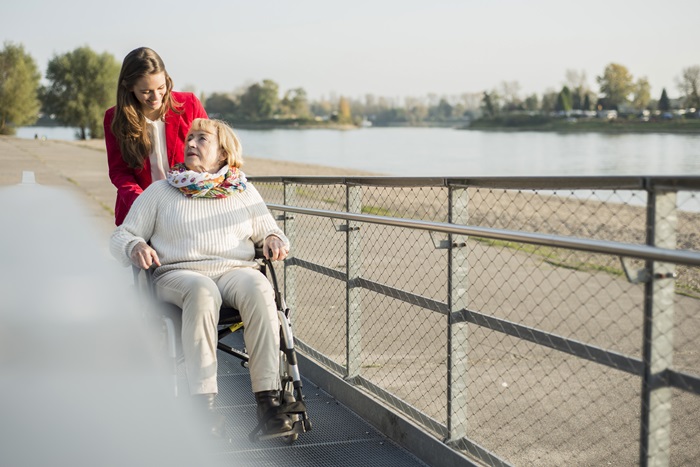
For many individuals requiring home care services, maintaining independence and a sense of normalcy often hinges on one crucial factor: reliable transportation. While home care provides essential support within the comfort of their homes, appointments, errands, and social outings can become roadblocks when mobility is limited. The study aims to delve into the unique challenges of Home Care Patients Transportation and explore innovative solutions to bridge the existing gap.
The Scope of the Challenge Home Care Patients Transportation
Transportation barriers pose a significant hurdle for home care patients, impacting their access to vital healthcare services. Here’s a closer look at the challenges:
- Limited Mobility: Conditions like chronic illness, disability, or age-related limitations can make driving or using public transportation difficult or impossible.
- Lack of Public Transportation Options: Rural areas or underserved communities may have limited public transportation options, challenging independent travel.
- Cost and Coordination: Scheduling and affording reliable transportation services, especially for frequent appointments, can be a financial burden for some patients.
- Fear and Anxiety: For some, navigating unfamiliar public transportation systems or relying on unfamiliar drivers can be anxiety-provoking.
The Consequences of Transportation Barriers
The implications of these transportation challenges are far-reaching:
Delayed or Missed Appointments
Difficulty accessing transportation can lead to missed doctor’s appointments, therapy sessions, or specialist consultations. This can hurt overall health and well-being.
Social Isolation
Limited mobility can restrict patients from attending social events, visiting friends and family, or engaging in hobbies. This can exacerbate feelings of isolation and loneliness.
Hospitalization Risk
Delayed medical care due to transportation barriers can lead to complications and potentially increase the risk of hospitalization.
Reduced Quality of Life
The inability to participate in activities outside the home can significantly decrease a patient’s overall quality of life.
Building Bridges: Solutions for Home Care Transportation

Fortunately, there are solutions to address these transportation challenges and empower home care patients to maintain independence and well-being:
- Home Care Transportation Services: Many home care agencies offer dedicated transportation services specifically designed for their clients. These services provide reliable transportation to appointments, errands, or social outings. PSWs (personal support workers) can accompany patients, offering assistance and ensuring a safe and comfortable journey.
- Volunteer Transportation Programs: Community organizations or faith-based groups often offer volunteer-driven transportation programs for seniors or individuals with disabilities. These programs can provide a cost-effective solution for occasional appointments or errands.
- Non-Emergency Medical Transportation (NEMT): For individuals requiring medical transport, NEMT services provide specialized vehicles equipped to accommodate specific needs. Insurance plans may cover or partially cover NEMT costs.
- Ridesharing Services: Ridesharing apps like Uber or Lyft can be a convenient option for some patients. However, it’s crucial to consider potential accessibility limitations and ensure the driver can accommodate any specific needs.
- Public Transportation Advocacy: Advocating for improved public transportation infrastructure, like accessible bus stops and low-floor buses, can make these options more viable for a wider range of home care patients.
The Role of Home Care Companionship
Home care companionship services play a vital role in addressing transportation challenges. Here’s how:
- Understanding Needs: PSWs can assess a patient’s specific transportation needs, including mobility limitations, appointment schedules, and preferred methods of travel.
- Assistance with Scheduling: PSWs can help patients schedule appointments and coordinate transportation services, ensuring timely arrivals and minimizing stress.
- Companionship During Travel: PSWs can accompany patients during transportation, providing physical assistance, emotional support, and companionship, especially for those experiencing anxiety about travel.
- Exploration of Options: PSWs can explore different transportation options alongside the patient and their family, identifying the best solution based on individual needs and budget.
Beyond Appointments: Promoting Active Lifestyles
While ensuring access to medical appointments is crucial, home care transportation services can also facilitate an active and fulfilling life. PSWs can accompany patients on outings, walks, or social activities, promoting physical and mental well-being while mitigating transportation challenges.
Building a Collaborative Approach
Addressing transportation challenges for home care patients requires a collaborative approach. Here’s how different stakeholders can contribute:
- Home Care Agencies: Integrating transportation services into home care packages and partnering with transportation providers can offer a seamless solution for clients.
- Community Organizations: Expanding volunteer transportation programs and advocating for accessible public transportation options can create a more inclusive environment.
- Government Agencies: Allocating resources for NEMT services and improving public transportation infrastructure are crucial steps towards ensuring access for all.
Conclusion: A Journey Towards Empowerment
By recognizing the challenges and exploring available solutions, we can bridge the transportation gap for home care patients. Reliable transportation empowers them to maintain independence, access vital healthcare services, and participate in activities that enhance their well-being.